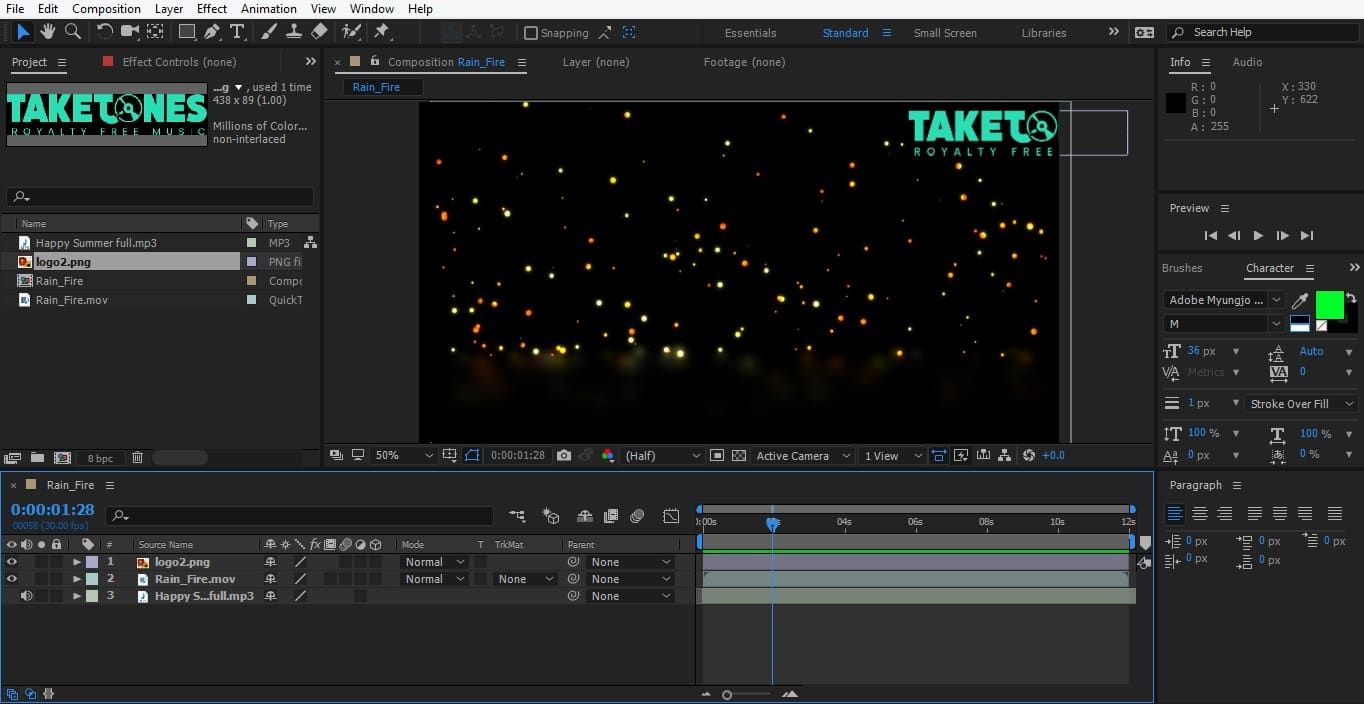

Every time you create a new composition, a “Composition Settings” window will appear on your screen. If you already have the program open, you may either click on the “Composition” tab and select “New Composition” or use the keyboard shortcut Ctrl+ N. At the Welcome screen, locate and click on the “New Composition” button in the right column. Projects in Adobe After Effects are called compositions, or comps. Looking for more on Adobe After Effects? Check out these articles.Make and set up a new composition. It is also a good idea to apply some grain on top of the Camera Lens Blur effect to help simulate image noise. You can duplicate those layers as well to fill back in any transparency issues. You can also create another top duplicate copy and apply a blur to it to create a secondary glow.įinally, use the “Camera Lens Blur” effect to composite elements close to the camera and out of focus.
ADOBE AFTER EFFECTS 2014 TUTORIAL FREE
(I use a fire asset in the tutorial from RocketStock’s free Action Pack Lite!) If the element you’re applying a blending mode to looks too faint, just duplicate it - that should help fill back in some transparency and color vibrance. Now you can turn off the adjustment layer and set the “Amount to Tint” level around 30-40%.ĭon’t be afraid to take advantage of different blending modes if you’re compositing in elements like fire, smoke, or explosions. Do the same for “Map White to”, but select a lighter color in your scene. On the Tint effect, for “Map Black to,” select a darker color of your scene. (This helps blend all of the colors together smoothly.) Next, apply the Tint effect to your composite element and bring the “Amount to Tint” level down to 0%. Create an adjustment layer, and then add a “Fast Box Blur” to that layer, directly above your original footage. Matching the color tint of the scene is really easy to do. This is where everything comes together nicely. Adding grain can also help break up any unwanted color banding that might occur.Īdjusting the color tint on your composite element is my favorite part of the compositing process. Try and match the real-world grain of your footage by looking at how much grain shows up in the darker areas of your image. I recommend using the Noise effect located under “Noise & Grain” in the effects list. This helps prevent the element from looking frozen because the grain movement will add some subtle variance. Dialing down the sharpness can also help reduce any aliasing issues that might occur on CG elements.Īdd grain on top of your composite elements to match your original footage grain. I typically will set this around -10 for CG elements like the billboard added to the town-square scene.

Under the Creative controls, you can dial the Sharpness setting up or down. Use the Lumetri Color effect to adjust the sharpness as well. Sharpness is the next thing to take a close look at. You’ll want to match the sharpness or, in many cases, the softness of your original footage. I recommend using the Lumetri Color effect and dialing down the saturation under the “Basic Corrections” controls. So the first step is to dial down the color saturation.

This is because colors have a tendency to become washed out in natural lighting conditions. This isn’t necessarily a bad thing. However, when you look at colors in the real world, things are not nearly as saturated as say a 3D model might be. When you add an asset into a scene in post (whether it’s a CG model, keyed live-action footage, or even just a photo), typically these assets will have a high color saturation. The four basic elements of compositing we’re going to look at are: color saturation, sharpness, grain, and color tint. No matter what you’re adding into your scene, we want the integration to look seamless. You may have heard the adage that “the best visual effects are the ones you don’t know are there.” And that is what we’re striving for with these compositing tips.


 0 kommentar(er)
0 kommentar(er)
